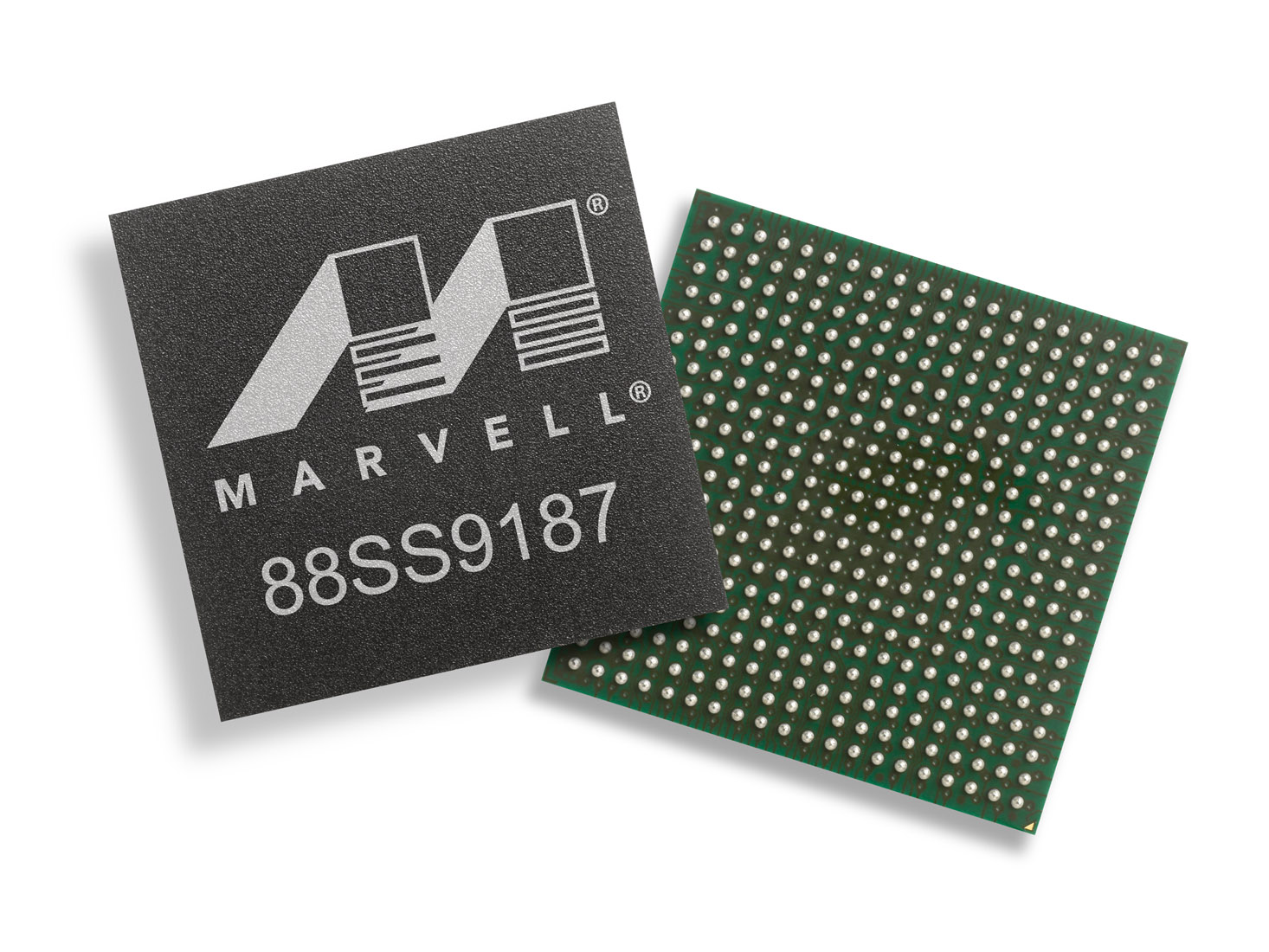Marvell was the first to enter the SATA 3 SSD market by several months. The Crucial C300 used the first SATA III Marvell processor as early as mid-2010.
Since that time, there several manufacturers have used the Marvell controller, and with great success. No stranger to enterprise needs, Marvell controllers have also been used to equal success in enterprise flash products.
Now, with sights set on the burgeoning Ultrabook market, Marvell is releasing a controller which could change the current landscape in mobile performance storage.
The Marvell 88SS9187 could be one of the fastest consumer/client SSDs on the market in the near future, and most of those will be found in next generation “Ultrabooks”. Traditionally, OEM SSDs have not been very fast in any performance category, instead adhering to a slow but well validated platform. While this is changing, this Marvell controller maybe part of an effort to bring superior storage performance to laptops everywhere.
The 88SS9187 is said to have more advanced error correction capabilities and ‘on chip RAID’, presumably to bring a redundant capability to help the drive survive the failure of a whole NAND flash memory die.
Additionally, the new ‘9187 should be capable of handling 200MB/s per channel internally. This could give the flash controller the ability to get faster as newer, speedier NAND specifications are developed. Better yet, host read and write speeds should hit 500MB/s, even when in a well-used “dirty” state. That could be just enough to make the next drive built around Marvell’s flash controllers the fastest drive on the market.
Marvell claims their new controller has the lowest power use, both idle and standby, of any current product. While SSD power consumption is not strictly governed by the processor alone, any help in this department may serve to extend battery life. NAND selection plays a large role in power consumption too, but more advanced flash built on smaller design rules is generally using less power.
Rounding out the other features is support for 1GB of low power DDR3 cache. Some drives utilizing current Marvell controllers, such as Corsair’s Performance Pro, have as much as 512MB of DRAM cache. More cache doesn’t always translate into better performance, but it doesn’t hurt either. As drive capacities get larger, more cache is necessary. How a drive uses it’s cache varies from model to model, but each successive SSD release usually packs more RAM than it’s predecessors.
Details are scarce at the moment, but the ‘9187 could live up to its billing as a next generation controller. If that is the case, things are looking better for laptops and Ultrabooks every day. OEM’s like Dell have begun using Samsung’s 6Gbps products and Asus is using two different 6gbps products in it’s Zenbook line. Hopefully, the trend of better storage performance on-the-go will continue, and the Marvell 88SS9187 could help make that happen when products begin shipping.
 The SSD Review The Worlds Dedicated SSD Education and Review Resource |
The SSD Review The Worlds Dedicated SSD Education and Review Resource | 

Can’t help but wonder what Sandforces response will be.
shouldn’t that be 512MB of cache?